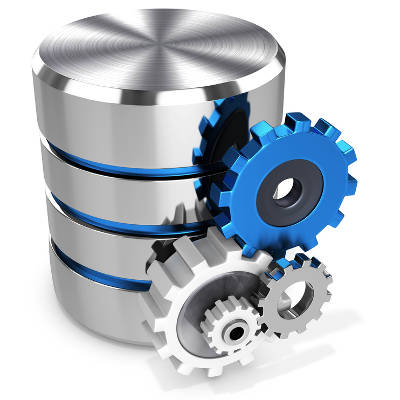Backup and Recovery is Essential for Today’s Business

How confident are you that your business could survive a worst-case scenario? Organizations should always be ready to go in case they are struck by overwhelming odds, be it a hacking attack or a natural disaster. How would your business respond to a disaster scenario? Do you have a business continuity plan put in place so that you can guarantee your organization survives to see the light of another day?
A business continuity plan consists of much more than just data backup and disaster recovery, though. It includes having a plan to keep mission-critical staff and personnel safe in the event of a disaster, as well as ways to stay in touch with your staff and get back in business as soon as possible following the disaster. If your business fails to eliminate downtime, keep key personnel safe, and restore crucial data, any random threat to your business continuity could put your future in jeopardy.
We’re going to discuss one of the most important parts of business continuity in detail: data backup and disaster recovery. With a BDR solution, you’ll be one step closer to keeping your business running following a crippling incident.
How Much Data is Being Backed Up?
If you ever need to ask the question of how much data is being backed up by your organization, you’re likely not backing up enough of it. You should be backing up all of your data, or as much is feasibly possible, so that you ever have to question whether or not a hardware failure robbed you of the most important data your business holds. Even losing something as simple as contacts can be a considerable annoyance, as you will then have to waste time collecting them all over again.
Traditional tape backup takes complete backups of your data, but it only does so on a limited basis. Catalyst Technology Group’s BDR solution can back up data more frequently, and only updates backups when files have been changed, making it a much more convenient and less straining solution for the average small business.
How Often is Data Being Backed Up?
Your data will only be so helpful if backups are only taken every so often. For example, tape backup only takes one big backup at the end of the day due to how it works. Since the process is rather intensive, it must happen after hours, lest it threaten your organization with downtime. This leads to a conundrum–take backups more often, or lose out on productivity due to your infrastructure being slowed or brought down by intensive, frequent backups.
A cloud-based BDR solution allows your company to take much more frequent backups without sacrificing uptime. Since the backups only occur for files that have been changed since the last backup was taken, they can happen more often–up to as frequently as every fifteen minutes. This lets you minimize data loss in the event of a disaster.
How Fast Can You Restore Data?
In the event of a data loss incident, there’s no time to waste. You need to get back in action as soon as possible so that you lose minimal time, resources, and assets. Yet, this is often more difficult than it seems, as you might not even have an infrastructure left to restore data to, if the disaster is bad enough. Even if you have tape backup, you’re looking at several hours or days to restore your business’s infrastructure completely, which isn’t an option if you’re looking to minimize wasted time.
Catalyst Technology Group’s BDR solution allows your organization to restore data directly to the BDR device, providing you with the opportunity to get back in business as soon as possible while worrying about replacement hardware later. This minimizes downtime and keeps your business active, despite overwhelming odds.
Does your business need a BDR solution? Catalyst Technology Group has your back. To learn more, reach out to us at (317) 705-0333.
Best Practices for Data Backup and Disaster Recovery

Have you considered the process in which your organization takes data backups and restores them following an emergency? The value of data backup and fast recovery can’t be ignored. Unless you take proper precautions, you could potentially face a situation that threatens the very existence of your business.
To emphasize the importance disaster recovery, consider this example. If your office were to catch fire due to an electrical problem, your legacy could erupt in flames alongside it. Even if you evacuate the building and save your employees, your technology will suffer and burn with the building. Some networking components might survive, but you’ll be lucky if anything can be salvaged from an event like this. This is why every business needs a data backup system in place.
Natural disasters, like floods, hurricanes, and thunderstorms can all cause problems for you as well. Therefore, you need to take care with how you manage your technology and your data. Even the slightest mistake could lead to large amounts of data loss. Therefore, the question of whether you will suffer from some sort of disaster isn’t if it will happen, but when it will happen. You need to take measures now to avoid suffering from disasters in the future.
Many organizations that have considered data backup and disaster recovery may not have the most optimal solutions implemented. If anything, they will have magnetic tape backup, which has long been considered the industry standard. Unfortunately, the many flaws prevalent in tape backup make it unappealing for SMBs. Since they are so resource-intensive, they must be performed after hours, and only one backup can be taken during the workday. This means that you could lose up to 24 hours worth of data in the event of a disaster–not exactly the ideal way to manage disaster recovery.
Plus, since some organizations will keep their tape backups located on-site or on their in-house infrastructure for convenience, a fire could simply destroy them along with the rest of your assets. A hacking attack could also target any digital backup files stored on your infrastructure, placing them at risk of corruption or theft. Naturally, the best way to handle data backup storage is to store them offsite, but this can complicate the actual disaster recovery process. What is the ideal way to store data while also allowing for great recovery time?
One way to solve these issues is to reach out to Catalyst Technology Group and ask us about our cloud-based backup and disaster recovery (BDR) solution. Since BDR takes smaller backups as often as every 15 minutes, your data loss is significantly reduced, if not mitigated completely. BDR only takes backups of files that have changed since the last time a backup was taken, ensuring redundancy without causing trouble for operations. The possibility of user error is also eliminated, as the backups happen automatically rather than manually. Your data will then be sent to a secure offsite data center for storage until the day you will inevitably need it. The data is then recovered via an Internet connection directly to the BDR device until you’ve found a replacement server unit to fulfill the role. It’s just one way that enterprise-level technology can help your SMB thrive.
To learn more about data backup and recovery, reach out to us at (317) 705-0333.

